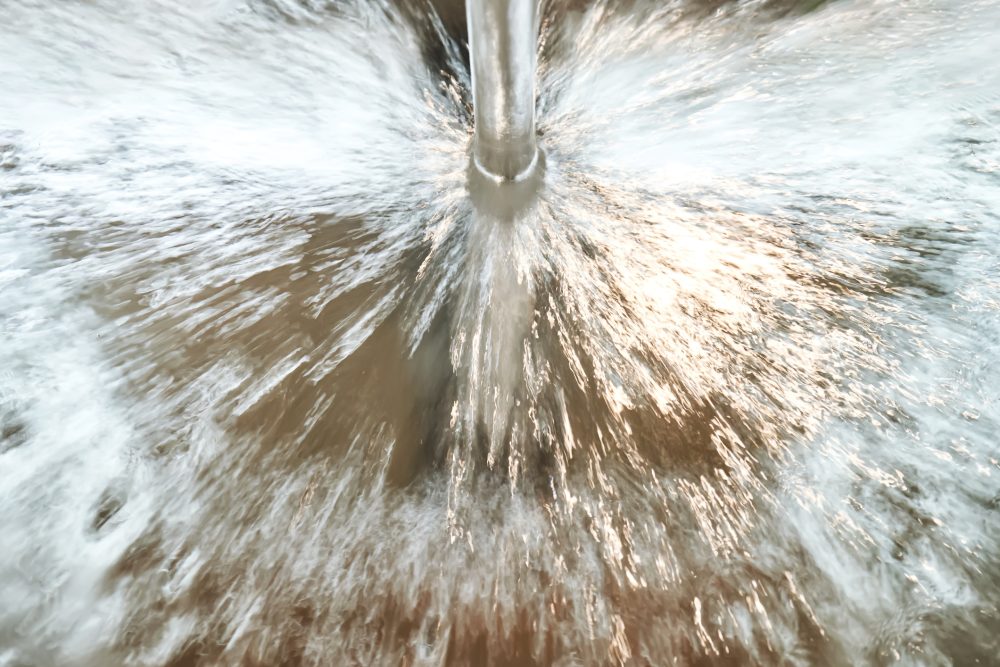Gravel2Gavel Construction & Real Estate Law blog — October 24, 2024
We need water to live, but access to it is not always guaranteed. UNICEF predicts by 2025 that half of the global population will be living in areas with water scarcity due to a changing climate and increasing agricultural and industrial demands. Many countries lose a surprising amount of potable drinking water due to leaks. For example, in the United States alone, an estimated 6 billion gallons of treated drinking water seep out of its supply every day due to aging pipelines and undetected leaks.
“Smart” water innovations may offer conservation solutions, though. Many municipalities are transforming their water systems as part of a smart city scheme where internet of things devices (IoT) work with AI to improve everyday life. We look at some key intelligent technologies to improve our water supply. From new meters to irrigation, pipeline maintenance and more. Smart meters are the most common upgrade for local water utilities. They use sensors to wirelessly transmit readings from homes and business to municipalities and stakeholders. Smart meters, also known as advanced metering Infrastructure (AMI), provide more accurate and timely readings than previous models. They can send a wireless alarm if they detect an unusual (or continuous flow of water) that could indicate a leak. AMI systems can be expensive to install, but they offer many benefits over time, including streamlined billing, data collection and analysis, better water conservation, and reduced carbon emissions. These upfront costs can be offset by eliminating the need for utility workers driving around to physically check meters. New Orleans, San Diego, and Asheville have been among the most recent adopters. Smart water meters are also being installed in parts of the UK. Countries like Spain and South Africa have national initiatives to install these meters. Washington City, facing water scarcity and drought issues, had crews install 15000 residential meters throughout the city by 2023. More will be installed at every business, institution, and industrial building. Like many towns making this transition, the region anticipates that staying on top of leaks (homeowners can sign up to be notified via an app, and city officials will be looped into any significant water loss) will ease its water anxieties.
- Although the new meters were generally well received in Washington City, their use as conservation enhancements has not been welcomed everywhere. Fresno in California tested a three-month trial program where citizens were fined if they violated water restrictions based on readings from smart meters. On paper, it worked: infractions decreased by 17%. But simultaneously, citizen calls to the utility increased by 654%, ultimately leading Fresno to abandon the approach–and indicating that there is still a balance to find between conservation and the public’s response.Pipeline Monitoring
. In 2024, a nearly 100-year old, corroded water main burst in downtown Atlanta. Residents were forced to boil their water, and it took several days to restore safe drinking water. The Georgia capital is now piloting a new program that uses AI-driven devices to gather data and predict pipeline failures. According to a University of Utah study, 30% of water mains in the United States and Canada are older than 50 years, meaning they’re past their useful life. Cities are trying a host of tactics to keep tabs on leaks, from dogs trained to smell chlorinated water in the ground, to robots and even drones aimed at leak detection.
Technology company AP Sensing offers a handful of “smart” solutions; it installs fiber optic cables inside or outside of existing pipelines (often, new pipelines include these cables) that act as sensors and measure changes in thermal, acoustic, vibrational and strain signals. This data, known as pipeline imaging is collected and combined on a software platform to provide a remote visual overview of pipe condition. The technology can detect leaks and pinpoint their location within seconds. Similar services are offered by Xylem, which also offers real-time monitoring for pipelines via devices and apps. This technology was introduced in Italy in 2019. Since then, officials have reported that 170 leaks were detected. They estimate that this technology has saved 1.4 million cubic meters of water (about 370 millions cubic gallons). These innovations allow municipalities to pinpoint problem areas, so they can dig only where necessary and intervene before any major damage occurs. In 2022, Kansas City (Mo.) will partner with California-based tech company Orbis in order to install 150 multi-sensor devices that detect leaks on fire hydrants throughout the city. The SmartCap sensors can be installed on any fire hydrant and wirelessly transmit real-time leak alerts to a cloud portal monitored by water technicians. The sensors use an algorithm to analyze the acoustics information and then send alerts about leakage and other conditions. GPS allows the sensors pinpoint precise locations. Since installing the gadgets, Kansas City has identified 30 leaks.
- Irrigation. Lumo, a California-based tech firm, designed a smart system of irrigation that optimizes water delivery based upon a variety factors (such soil moisture levels, climate conditions, etc.). It uses sensors, valves, and other devices not only to monitor and automate the watering needs of growers, but to also analyze data in order to make farming more effective. The technology provides leak alerts almost instantly via a cloud app. After Lumo’s partnership, with Central Valley, one of the largest vineyard equipment suppliers in Northern California, wine makers may soon be using more intelligent irrigation systems. A recent market study indicated that the number AMI endpoints will double in Europe and North America between 2022 and 2028. The new technology also brings with it new security questions and sometimes vocal opinions that need to be balanced with environmental concerns. Cities are grappling with all of these components as they strive to become smarter–and better stewards of our natural resources.
RELATED ARTICLES
- With Wildfires at a Peak, “Firetech” Is Joining Smart City LineupsBalancing Cybersecurity Threats in Smart Cities: Is the Potential Convenience of “Smart” Intersections Worth the Risk?






